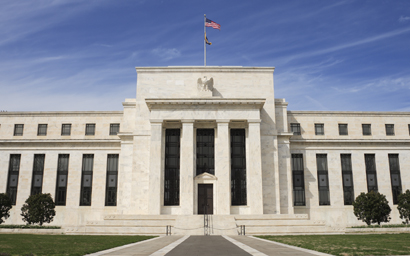While many fund managers contemplate how they had come to believe so strongly in Federal Reserve tapering, which then did not happen, the signs are that equities in developed markets will be a major beneficiary.
Developed market equity funds last week saw their biggest weekly inflow since at least 2000.
Dominic Rossi, Fidelity Worldwide Investment’s global chief investment officer for equities, says he expects the asset class to do particularly well following the Fed’s decision to delay the reduction to its economic stimulus, or quantitative easing.
The US central bank announced on Wednesday last week that it would continue making asset purchases to support recovery.
According to EPFR Global, even before the surprise of no tapering, the Developed Markets Equity Funds sector it tracks – particularly the US – was already starting to record the biggest weekly inflow since 2000, when the data firm started monitoring the category. This was interpreted as a sign that investors did not expect tapering to be too dramatic.
By September 18, EPFR Global-tracked equity funds had taken in a net $25.94 billion (€19.17 billion), eclipsing the previous record set in 2007.
US equity funds, absorbing nearly $17 billion in new money during the week, are on course for the first full-year inflow since 2004, while UK equity funds recorded their biggest weekly inflow since Q1 2010.
Bond funds saw an eighth consecutive week of outflows.
“The markets knee-jerk reaction to the announcement all made sense, with the dollar weakening, equity markets soaring and commodities also being boosted,” says Fidelity’s Rossi.
He adds: “We see the Fed’s stance as bullish for equities in general, but mainly for developed markets over emerging markets, particularly as structural issues remain in the latter that show no signs of going away.”
Many investors expected tapering to commence in light of positive economic data in recent weeks. But there had been flies in the ointment.
Clear Currency, a broker, says in a market report: “For example, 30-year fixed mortgage rates had jumped from 3.5% in April to around 4.5% recently. Not ideal if the Fed wants to stimulate the economy.”
The reducing unemployment rate had also provided incentives for investors to expect tapering to begin this month.
But according to Abi Oladimeji, head of investment strategy at Isle of Man-based Thomas Miller Investment, broader measures of employment do not paint such a positive picture.
Oladimeji says the labour force participation rate – which is the percentage of working-age people that is either employed or officially unemployed – paints a picture of a less robust recovery, along with other indicators.
“The decline in that rate, which is now at multi-year lows, is partly driven by the departure from the labour force of people who have given up hope of finding jobs. Indeed, much of the decline that we’ve seen in the unemployment rate can be attributed to the decline in the labour force as opposed to real job creation.”
©2013 funds europe





